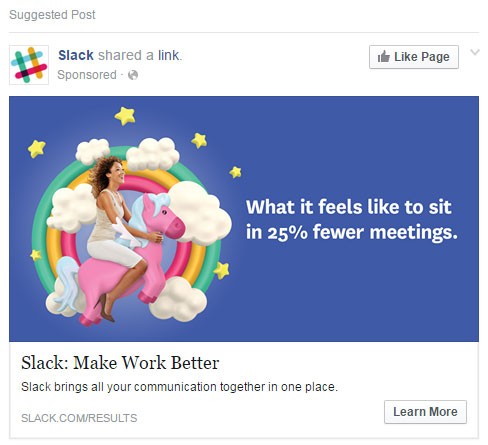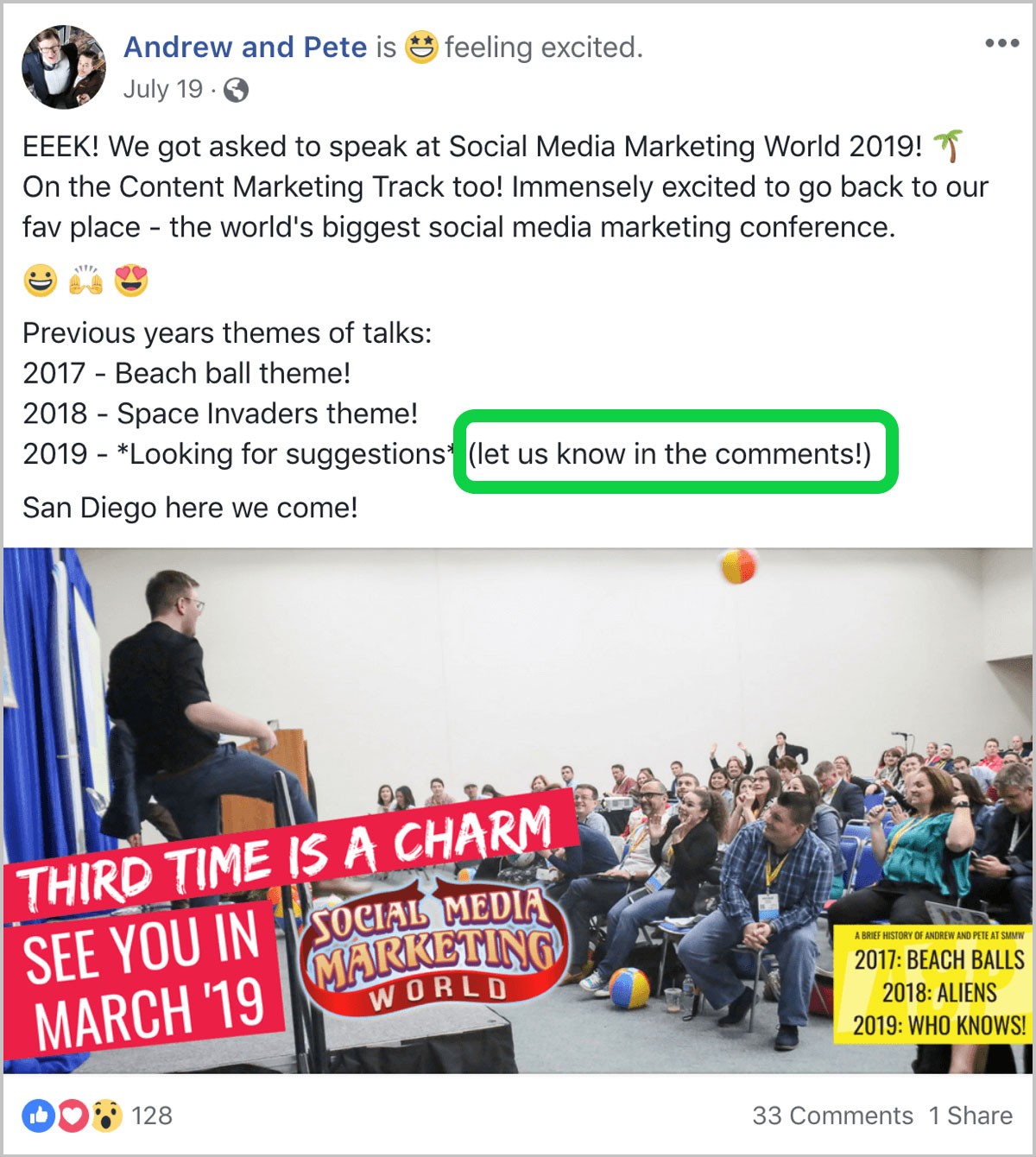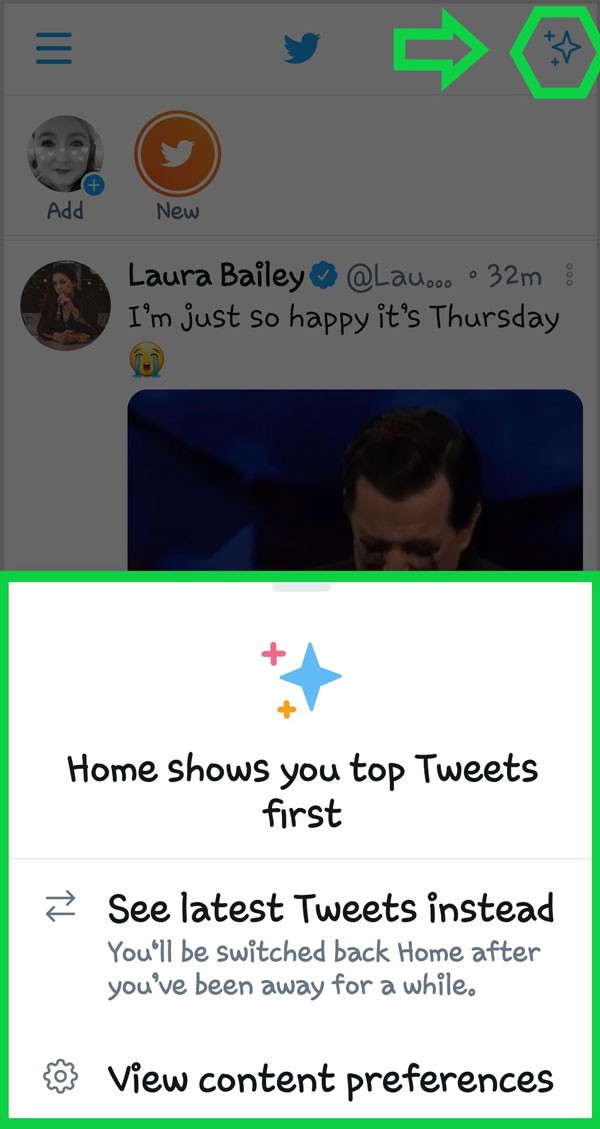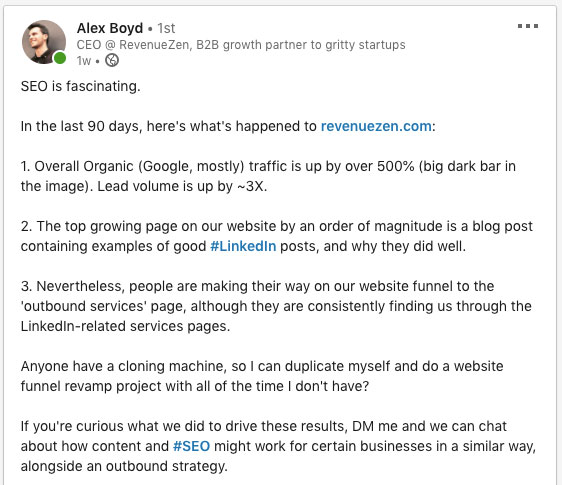Social media platforms offer a challenge to people and businesses seeking continuous change in their functionalities. New challenges continue to crop up with rising concern in data privacy and fake news. For these reasons, implementing an algorithm in social media drastically changes day to day operations to keep up with current dynamics.
A social media algorithm is a series of codes that controls the behavior of a platform. Different algorithm formulations help to drive the activities of particular social media platforms. The algorithms determine what you see in your newsfeed from friends and followers and posts by businesses.
During the platform’s development, the algorithm’s purpose is to promote influencers and get loyal, steady users. It organically shares videos and content of active users to encourage the new users to check out the active accounts. The primary goal of the algorithm at the infancy stage is to build a user base. Therefore, it is more likely to grow fast if you push content consistently when the platform is still new.
Timing is thus critical as the initial drive for user creation slowly shifts into revenue generation. The algorithm fine-tunes content for you to keep using and viewing ads. It also governs the entire platform and changes over time-based on trends and user preferences. However, the overall goal is to build a big consumer-based, keep you hooked to the content as long as possible and make money through ad revenue.
Many factors, such as comments, views, likes, shares, tweets, and retweets, impact your feed ranking. The argument between relevance, reverse chronology, or engagement with posts has prompted the need to understand how algorithms work on social media. Questions such as how do social media algorithms work helps marketers improve traffic and the SEO ranking of their websites.
Facebook Algorithms
The top priority of this algorithm is to connect Facebook users to content that is most relevant to them. The Facebook legacy algorithm was designed so that everyone who is your friend can see your posts. Progressively, the news feed became a garbage bin for business posts, drivel videos, fake news, quotes, and other things.
Numerous posts and tons of content by businesses, media, and brands invaded the user’s moments. It thus prompted for change when answering the question ‘how do social media algorithms work on Facebook’, as it was evident that the content was practically impossible for the algorithm to manage.
January 13th, 2018 goes down in history as the day Facebook had to re-engineer its news feed after suffering a loss of $119 billion. The introduction of Facebook Ads became a perfect moment to change the algorithm for social media. The algorithm slowly eroded the organic reach so that companies would be able to pay for advertisements. This factor explains why the share price in Facebook has risen over the years while the organic reach has drastically dropped. Here is an example of a Facebook Ad:

(Image Credit: WordStream)
There has been a paradigm shift when tackling issues like ‘how do algorithms work on social media’ when deciding what content to show on the user news feed. Facebook algorithms show your post to a small group of your business page followers or a small number of your friends first.
Depending on how those followers engage with your post through likes, reactions, comments, and shares, the Facebook algorithm decides whether to show the content to another group of people or no one else at all.
When most of the people with whom Facebook has shared your content react, share, or comment, the algorithms’ signal is clear that the content is relevant and interesting. Facebook will then share with more people. Suppose there is positive engagement with the content, then more people will be able to see your post.
Facebook thus shares content with a small group of followers, and then the algorithms detect the amount of engagement with the content. The higher the engagement with the content, the more the algorithm shares with more people until it goes viral.
Comments take the lion’s share in the form of the most valuable kind of engagement on Facebook. This therefore means that businesses should tailor their posts strategically to get many people commenting on it. The more engaging your content is, the more it will show up in other people’s newsfeed, and the vice-versa is true. In other words, if you have boring content that people never usually comment on, the algorithm in social media learns this, and the chances are that it will not show anyone your content. The image below shows an example of a post that encourages its followers to comment:

You Might Also Like
(Image Credit: Social Media Examiner)
The Facebook algorithm works simply when arranging the appearance of the newsfeed. Four main elements allow it to achieve its aim.
- Inventory: All available posts.
- Signals: Factors to consider when selecting the content.
- Predictions: Forecast reactions to the posts
- Overall score: Summary based on the predictions.
The post that receives the highest score will feature higher in the newsfeed. Facebook algorithm put extra focus on engaging the post and usage of other Facebook tools such as Facebook Live or Messenger during signaling.
Test your website’s SEO and social media score in 60 seconds!
Diib is one of the best SEO and social media monitoring tools in the world. Diib syncs to Facebook and Google Analytics and uses the power of big data to help you quickly and easily increase your social media traffic and SEO rankings.
- Easy-to-use automated social media + SEO tool
- Keyword and backlink monitoring + ideas
- Speed, security, + Core Vitals tracking
- Automated ideas to improve Social Media traffic + sales
- Over 500,000 global members
- Built-in benchmarking and competitor analysis
Used by over 500k companies and organizations:
Syncs with 
Tips to Increase Facebook Engagement
- Understand and analyze your fan base by posting only when they are online
- Share curated content
- Create content for Facebook only using videos and Facebook live
- Use polls to ask questions and tag your audience to be part of the conversation
- Boost post using pay to play
- Learn from other pages
- Experiment with new content
- Reply to each comment
- Use Facebook groups
Twitter used to display its content in reverse chronology. With loads of content being added per second, this algorithm could not match the chronological order. Copying from Facebook, Twitter added an algorithm based on relevance through their “the best Tweets you may have missed” feature. The aim was to reduce bots and automation systems to like and retweet content.
The hierarchy of content on Twitter is the most engaged versus the least engaged. Livestream content comes in the first place, video content at the second position, image and text content numbers take the third and the fourth places respectively.
The format of the hierarchy and your followers determine what appears on your timeline and the priority. The rank of your tweets or others on your timeline is dependent on whom you have been able to engage with your content historically and whose content you have engaged historically.
The older algorithm in Twitter that works in the reverse chronology, displays the latest content by those you follow. The new algorithm provides you with the most relevant content based on your previous social network use. Switching between these two algorithms is much easier on a cellular device. At the right top corner, you see three little stars, and by clicking, you can change from one algorithm to the other. For example:

The newer algorithm hierarchy works in such a way that the ranked tweets appear at the top, and in case you missed them, they come immediately after other retweets, suggested accounts and promoted tweets. The algorithm usually suggests other users primarily because Twitter wants to increase the connectivity between the currently active ones since not so many people join Twitter.
There are four main ranking signals in the algorithm.
- Recency: How long since the tweet was sent
- Engagement: How many clicks, retweets, and favorites, also called likes and impressions the tweet has drawn.
- User activity: This is how active the user is on their account.
- Media type: Video, image, text, or GIF.
A mathematical computation based on the four criteria above informs the Twitter algorithm that tweets should show specific user timelines.
Tweets usually do not last more than a day unless they have gone viral using the new algorithm. Recency is certainly the most important aspect since Twitter is concerned about what is happening right now.
Engagement is the other critical aspect used by Twitter. Whereas impressions play a role, it is impossible to see the tweet impression unless you pull that data from your Twitter analytics. Typically, impressions refer to the number of times somebody sees a particular tweet on their timeline and the period. Comments followed by impressions then clicks, retweets and favorites are the order in which the algorithm checks in engagement. The algorithm favors comments since the aim is to have higher quality conversations in the tweets.
A live video sent out recently with many comments on it and many clicks to it is the best form of content you can produce for the highest algorithm rating.
Inactive or dormant users do not get a lot of visibility or rank on Twitter. Users will generally see more tweets from users they mostly talk to, and if there are no responses, then no one else will see that user’s tweet. A good strategy before broadcasting your content is first having conversations with your targeted users.
Summary Tips on How to Rank High on Twitter Algorithm
- Engage before broadcasting
- Use heat maps to find out when most followers engage more with your content.
- Be active
- Create and develop topics that may interest your followers.
- Respond to comments on your post
- Improve your account’s credibility by updating your bio information, including location, and using an appropriate graphic for identification.
The Instagram algorithm is a feedback loop designed to put the most engaging content in front of its users to spend more time on the platform, consume more content and thereby see more ads. Each Instagram user feed is unique based on interactions on the platform.
Comments, likes, shares, and views impact the feed ranking. Likes, however, are not as important as they used to be before. The reason is that it is possible for someone to like your content without taking half a second to go through your content. Nonetheless, they still show Instagram algorithms that you enjoy that kind of content.
Similar to Facebook, comments are more influential in the algorithm and engagement for feedback ranking. Instagram algorithms are smart enough to understand the depth of a comment, whether it is a bot that is commenting or someone from an engagement group just copying and pasting comments. Only genuine comments, especially involving someone tagging a friend to a post counts as an algorithm for social media. For instance:

Shares and saves are also valuable to the Instagram algorithm. Sharing a post to your story indicates to the algorithm that you enjoy such content and results in more exposure to your followers. Content saves denote to the algorithm in social media that a user truly prefers that kind of content and would want more of such. The algorithm tracks the session time spent in consuming a piece of post thereby helping the algorithm to understand the kind of content that interests a user.
Contrary to many myths, videos and photos are treated equally by the algorithm. Even so, there is a likelihood of getting more engagements with videos than images. Personal, business, or creator accounts are considered equal to the algorithm. However, the algorithm social media displays more content based on the account that you have a genuine relationship with regardless of the account type.
The following summarizes the major traits of Instagram algorithms.
- A higher count of comments and likes are likely to appear first.
- Recent posts within the first hour of user login will be prioritized.
- Post from regular user engagements will appear first.
- Priority is mostly based on followed hashtags
Instagram algorithms have, however, been designed not to promote content of some nature. The following are the principles that make Instagram algorithms not to share certain content.
- Cosmetic procedures
- Overstated health claims
- Suggestive and explicit nudity and adult content
- Contests and giveaways
- Click baits
- Misleading and false content
- Recycled content that has no additional value
- Trade of regulated commodities
- Shares by fake and non-recommended accounts
Tips for Enhanced Instagram Engagements
- Use the appropriate hero picture that associates the person or business to the account.
- Indicate your bio in concise bullet points indicating who you are, what you do and why you do it.
- Post content that evokes emotions
- Write informative posts
- Participate in post discussions
- Employ the correct hashtag strategy based on your niche.
- Practice effective Geo tagging
- Promote your post
- Use new features that Instagram is using, such as Instagram TV and Instagram Reels.
Youtube
The Youtube algorithm is a giant machine that takes every single piece of data it possibly can from the Youtube platform in order to make better recommendations to people. The algorithm social media leans more on the viewer’s needs than the publisher’s in order to satisfy it at a given moment. The algorithm is tailored to meet the entertainment, informational or utility, and connection needs of viewers.
Factors that Determine Viewer Satisfaction
- What they click on
- What they do not click on
- View duration
- Video engagement through likes or comments
- Length of the session
- Frequency of return
- Feedback on Youtube surveys
We hope that you found this article useful.
If you want to know more interesting about your site health, get personal recommendations and alerts, scan your website by Diib. It only takes 60 seconds.
How the Youtube Algorithm Works
Every time a viewer comes on to the platform, the algorithm tries to predict which videos they will watch next. Billions of videos are passed through the candidate generation filter which sorts out the videos that it believes the viewer has no interest in watching. The filter usually performs its task by checking the following.
- Viewers watch history
- View duration
- Likes and dislikes
- Subscriptions
- What viewers clicked and what they did not click on
Multiple algorithm systems send the possible candidates’ videos to the ranking filter. The ranking filter ranks the videos according to each user based on its prediction of how much each recommendation will satisfy the viewer. The videos are displayed to the user, and upon choosing one, the process begins again. Youtube also chooses videos for the user based on categories they like, for example:

The ranking is done based on context and the following parameters help in this process:
- Current video being watched
- Device being used
- Time of day
- Location
- Whether they are on the homepage or watch page
Tips to Optimize Youtube Algorithms
- Apply keywords to your video title and description
- Engage users on your channel and comment on similar videos on different channels
- Research well to have meaningful content on your channel.
- Post regularly
Linkedin is a social platform that is used by most B2B marketers to interact and scale up their businesses. To make it to the top using the algorithm, one must understand how this platform works.
The LinkedIn algorithm goes through posts and selects the consistent posts. It does this by checking the profile that a user often engages with from time to time. Users who have multiple and huge amounts of engagement will have their content prioritized regardless of whether they like or comment on their post.
Lengthy posts are likely to be prioritized, while a mass of reactions and content from business pages do not get prioritized. Videos, images with text, and text posts, in general, are great content for any business that seeks answers to questions such as how do algorithms work on social media. Here is an example of a well written LinkedIn post that generated leads:

(Image Credit: RevenueZen)
Tips for Linkedin Algorithm
- Combine usage of the business page, entrepreneur and employee profiles.
- Post consistently
- Write content that evokes conversations.
- Share links within LinkedIn platforms
- Write relevant content
- Promote your post using hashtags
- Identify the niche and write content that is relevant to the niche.
- Make your profile public and brand it properly for increased discoverability.
- Use LinkedIn analytics to learn and borrow from posts that perform well.
Diib®: Social Media Algorithms Made Easy!
Social media algorithms can be difficult to understand and master. Partnering with Diib Digital will make those algorithms simple and easy to understand. Our software integrates with your social media accounts, giving you a complete understanding of the algorithms and demographics you need in order to become a social media success!
Here are some of the features that set us apart from our competition:
- Social media integration and performance
- Platform specific audience demographics
- Keyword, backlink, and indexing monitoring and tracking tools
- User experience and mobile speed optimization
- Technical SEO monitoring
Call today at 800-303-3510 to speak with one of our Professional Growth Experts or click here for your free 60 second site scan.
FAQ’s
Social media algorithms help to sort users based on their news feed and relevancy. These algorithms prioritize which content users see in their feed at a given time based on the likelihood they’ll want to read it.
There are so many marketing tips and tricks that can help you to beat social media algorithms.
- Find the right time to post
- Avoid outbound links
- Tag your location
- Upload video content first
- Use Chatbots in Facebook messenger for user engagement.
Some feel that algorithms result in biased outcomes and recommendations. Data can reflect historically significant biases or they might detect certain patterns that some would find discriminatory.
So many companies use algorithms to help sell their products. For example: Google, Amazon, Uber, Dell, Colgate, Under Armour and so many others.
The Facebook ad algorithm uses the users preferences and past behavior to present ads and posts based on that information rather than in chronological order.



